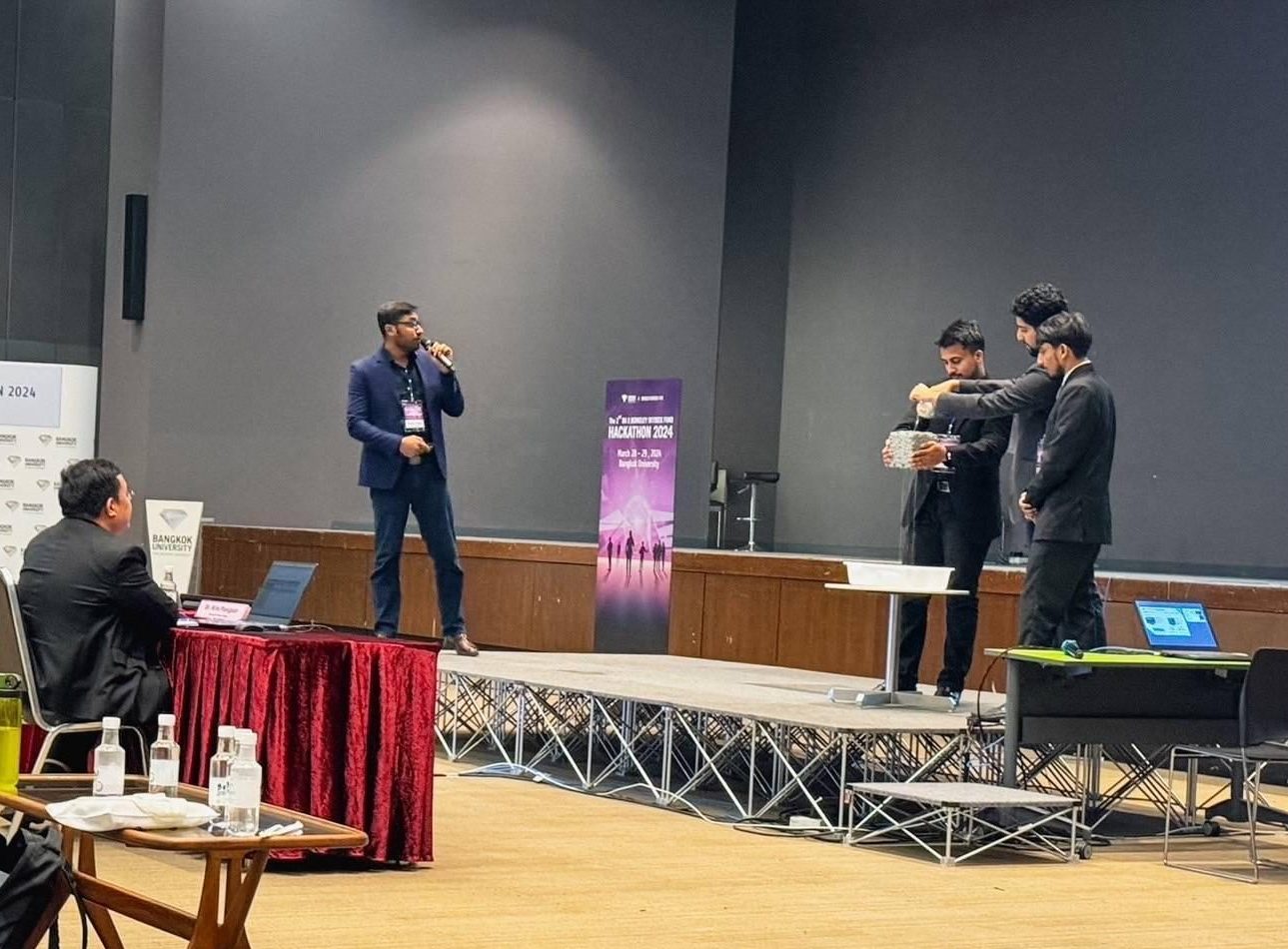“Placing the cage near the ‘108 Lawson’ utility store, was one of our
first steps,” Ms. Phyoe Thet Khaing, a Master’s student of
Environmental Engineering and Management (EEM) program says. “This is
one of the many measures that we initiated in the August 2014
semester,” she adds. The bin is targeted at collecting and segregating
packaging waste, with three cage compartments dedicated to plastic
bottles, metal cans and glass.
“Two more cages have been placed near the School of Environment,
Resources and Engineering (SERD) and at the AIT Arcade,” Ms. Siwaporn
Tangwanichagapong, a Doctoral student at Urban Engineering and
Management (UEM) adds.
Both Phyoe and Siwaporn have been working together towards a
three-fold target — focus on waste segregation, generating income for
low-paid workers at AIT, and reducing the volume of landfill waste at
the dumping station. “In the month of August, we collected 90 kilograms
of packaging waste, and this yielded 700 THB for two of AIT’s cleaning
staff,” Phyoe says.
These three bins are just one segment of a larger project “Greening
AIT Campus Initiative.” led by Prof. C Visvanathan, Interim Dean,
School of Environment, Resources and Development (SERD). “This is less
than one percent of the total recycle potential in AIT, which produces
two tonnes of waste every day,” says Prof. Visvanathan. A quarter of
this waste comes in the form of plastic and glass bottles, and metal
cans. “Thailand has already set a waste recovery target of 30 per cent
to be achieved by 2016, and AIT should be a pioneer in this field,” he
adds.
Besides the bins, four waste composters have also been placed in the
AIT residential areas. Organic waste is an issue in residential areas;
and measured by wet waste, food accounts for 60 per cent of organic
waste in AIT. “We began in the first week of August by placing one
composter in front of Dorm J inhabited by students,” Phyoe says. By the
end of the third week, three more composters had been placed at vantage
points.
Another component of her project is the segregation of dry and wet
wastes in the residential areas. Two locations are being used for a
pilot study, and residents are being requested to use black bags and
green bins for disposing wet waste, and white bags and yellow bins for
dry waste. Helping Phyoe in her task is Siwaporn, and both have worked
towards campaign and advocacy materials including posters, stickers,
banners, printouts and emails.
While Phyoe would graduate in a few months time, more AIT Eco Heroes
would take over from her. Phyoe was asked a simple question: “How long
do you expect this project to last?” Forever, she says!








